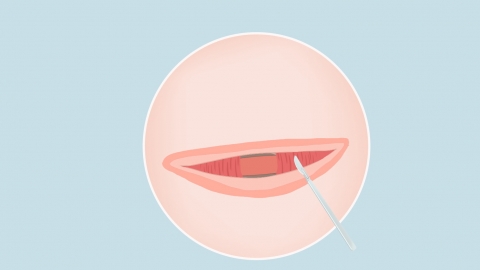What causes a wound to be both painful and itchy?
Wound pain and itching may be caused by the healing process, external irritation, wound infection, eczema around the wound, or contact dermatitis. These symptoms can be improved by avoiding scratching, proper cleaning and care, and medication. If symptoms persist or worsen, or if there is discharge, spreading redness, or swelling, seek medical attention promptly.

1. Wound Healing Process: During healing, the growth of new granulation tissue and nerve endings can stimulate the surrounding skin, causing mild pain and itching—particularly noticeable after the wound has formed a scab. There is typically no redness or discharge. Avoid scratching the wound; gently pat the surrounding skin to relieve itching. Keep the wound clean and dry, allowing it to heal naturally.
2. External Irritation: Contact with irritants such as soap, adhesive from bandages, or friction from clothing can irritate damaged skin, leading to pain and itching, possibly accompanied by localized redness. It is recommended to wear loose, soft clothing to minimize friction, use lukewarm water for cleaning, avoid harsh cleansers, and reduce exposure to external irritants.
3. Wound Infection: Bacterial contamination of the wound can trigger local inflammation, resulting in pain and itching, along with redness, warmth, and purulent discharge. Pain may intensify in severe cases. Under medical guidance, patients may use medications such as mupirocin ointment, fusidic acid cream, or cefuroxime axetil tablets to alleviate symptoms.
4. Eczema Around the Wound: Prolonged moisture or exposure to secretions around the wound can lead to eczema, causing pain and itching, along with red patches, papules, and blisters. This condition may spread to nearby healthy skin. Under medical supervision, treatments such as desonide cream, mometasone furoate gel, or loratadine tablets may be used to manage symptoms.
5. Contact Dermatitis at the Wound Site: Allergic reactions to dressings, topical medications, or other materials applied to the wound can cause contact dermatitis, resulting in pain and itching, along with redness and swelling of the skin. In severe cases, blisters may form. Follow medical advice to use medications such as hydrocortisone butyrate cream, cetirizine hydrochloride tablets, or calamine lotion to improve symptoms.
In daily care, keep the wound and surrounding skin dry, change dressings as instructed, and avoid materials that may cause allergic reactions. Maintain a light diet and avoid spicy or irritating foods. Do not scratch the wound to prevent worsening discomfort or secondary infection.




